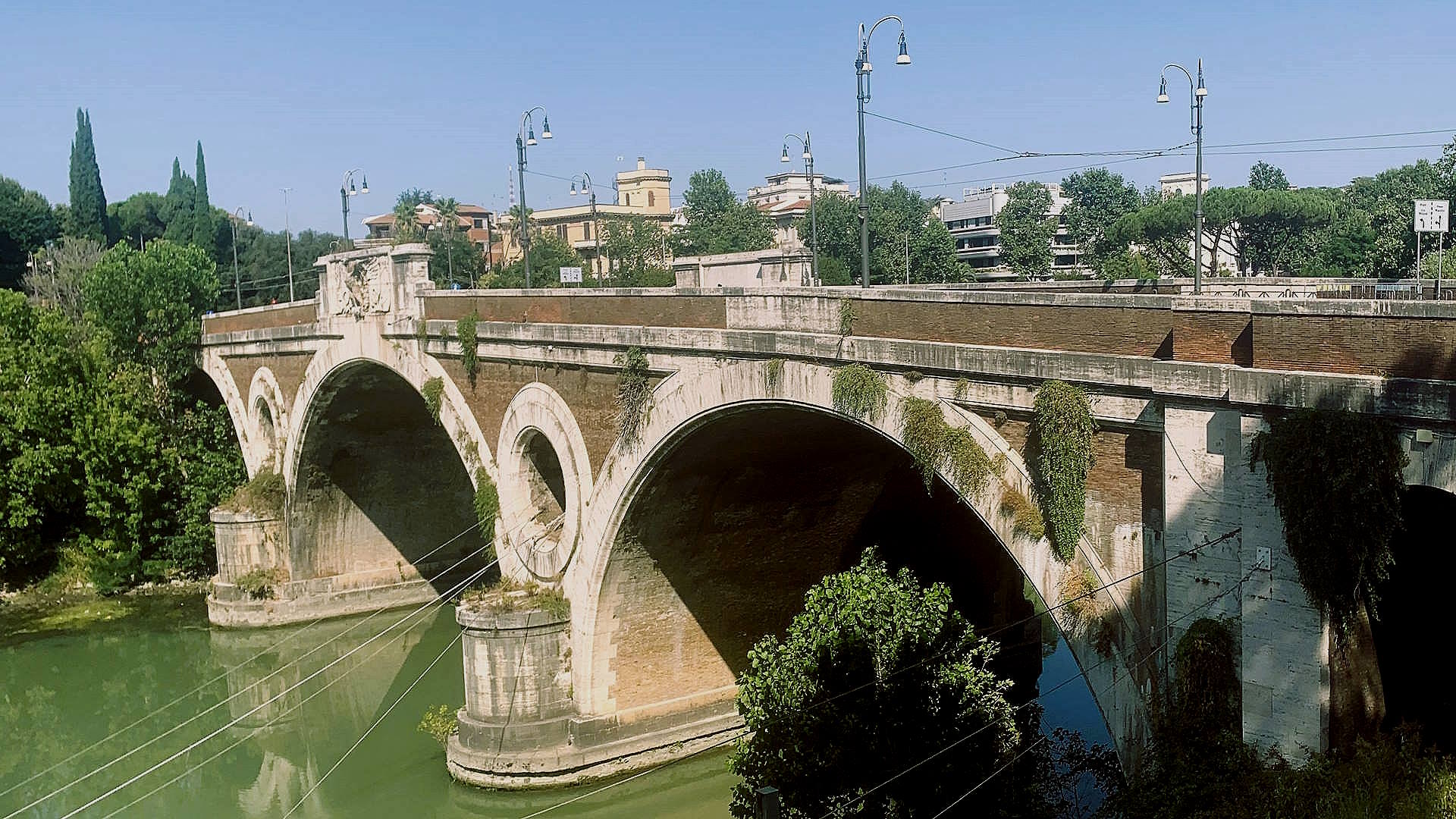
A bridge between two Ages
Known commonly as Ponte Matteotti, the imposing structure connects the two banks of the Tiber between the Flaminio district, near Palazzo Marina, and the Rione Prati, next to Piazza delle Cinque Giornate. Already included in the 1909 urban development plan, the realisation of Ponte Matteotti was entrusted to the architect Augusto Antonelli and his design with the motto Aurea Simplicitas, winner of the contest called by the Municipal Administration in 1920. Due to financial problems, work on its construction did not begin until 1924 and was completed in 1929, the year in which the bridge was officially inaugurated on 21 April, on the occasion of the Birthday of Rome. The name initially chosen was ‘delle Milizie’, considering its position in line with the avenue of the same name in the Rione Prati. However, in honour of the regime, it was finally called "Ponte Littorio".
A tribute to a great statesman
Following the collapse in June 1945 of the fascist regime, Ponte Littorio was definitively renamed Ponte Giacomo Matteotti in memory of the political leader who died twenty-one years earlier. On the afternoon of 10 June 1924, Matteotti, a member of parliament and Secretary of the then Partito Socialista Unitario (United Socialist Party), was attacked and kidnapped in Lungotevere Arnaldo da Brescia – adjacent to the area of the bridge – and then murdered, ten days after he had delivered a famous speech in the Chamber of Deputies. Dedicated to Matteotti is also L'idea, la morte (The Idea, the Death), the evocative bronze monument standing on the Lungotevere, at Scalo De Pinedo, an ancient port named after the pilot who landed on the Tiber with his flying boat in 1925. Realised by sculptor Iorio Vivarelli in 1974, the artwork has two distinct parts - a tall, slender spire evoking the shape of a leaf and, at the bottom, a tangle recalling a bramble of prunus, bones or human tissue. A plaque facing the street is engraved with a sentence Matteotti is said to have uttered before being assassinated: “Uccidete pure me, ma l’idea che è in me non l’ucciderete mai” (Kill me if you want, but the idea within me – you will never kill it.)
A majestic essentiality
Simple but imposing, the travertine and brick curtain bridge, measuring about 138 metres in length and 20 metres in width, has three arches, a central one surmounted by a travertine eagle flanked by two lictor fasces. Two large false circular openings recall the “Occhialone” (big eye) of the ancient Ponte Sisto, one of Rome's most romantic bridges connecting the Rione Trastevere and Rione Regola.
Photo Redazione Turismo Roma
Informationen
 Condividi
Condividi
Location
Um mehr über alle barrierefreien Dienste zu erfahren, besuchen Sie den Abschnitt barrierefreies Rom.











































